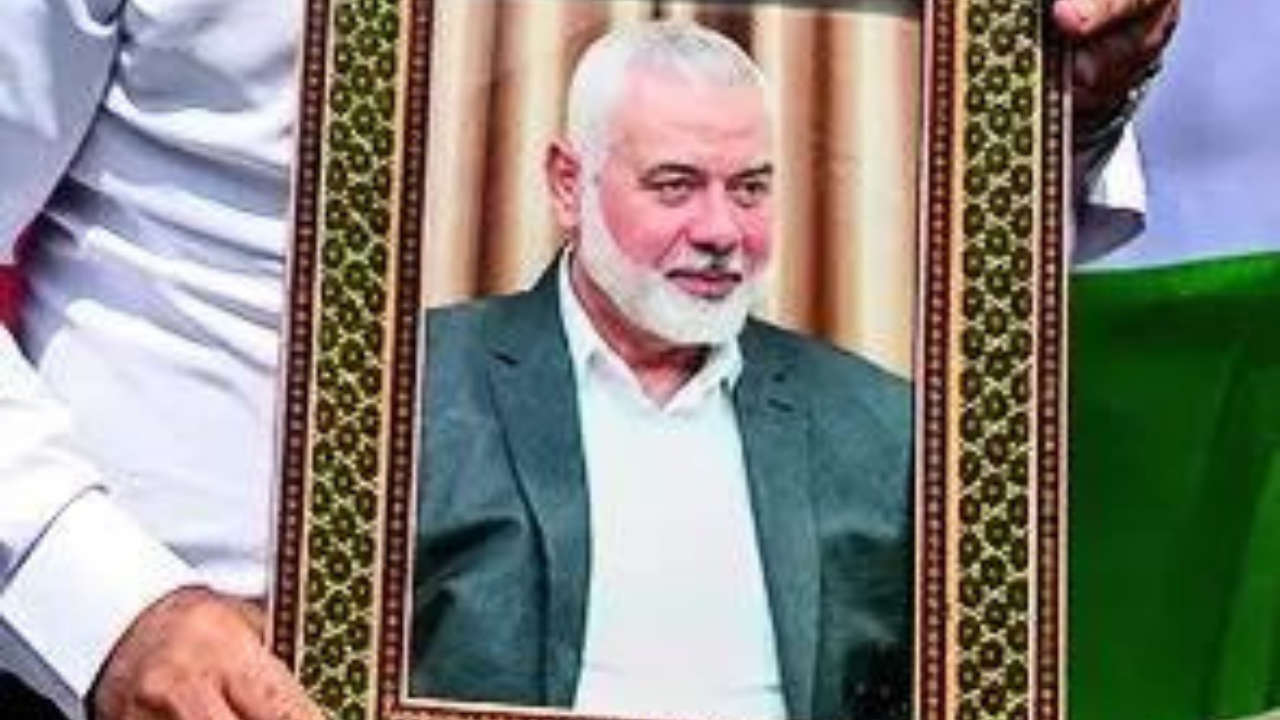Hamas chief Ismail Haniyeh was assassinated Wednesday by an explosive device covertly smuggled into the Tehran, Iran, guesthouse where he was staying, according to seven Middle Eastern officials, including two Iranians, and a US official.
The bomb had been hidden approximately two months ago in the guesthouse, according to five of the Middle Eastern officials.The guesthouse is run and protected by Iran’s Revolutionary Guard and is part of a large compound, known as Neshat, in an upscale neighbourhood of northern Tehran. The bomb was detonated remotely, the five officials said, once it was confirmed that he was inside his room at the guesthouse. The blast also killed a bodyguard.
The explosion shook the building, shattered some windows and caused the partial collapse of an exterior wall, according to the two Iranian officials, members of the Revolutionary Guard briefed on the incident.
Such damage was also evident in a photograph of the building shared with NYT.
Haniyeh, who had led Hamas’s political office in Qatar, had stayed at the guesthouse several times when visiting Tehran,the officials said.
Israel has not publicly acknowledged responsibility for the killing, but Israeli intelligence officials briefed US and other Western govts on the details of the operation in the immediate aftermath, according to the five West Asian officials.
In the hours after the killing, speculation immediately focused on the possibility that Israel had killed Haniyeh with a missile strike, possibly fired from a drone or a plane, similar to how Israel had launched a missile on a military base in Isfahan, Iran, in April.
That missile theory raised questions about how Israel might have been able to evade Iranian air defence systems again to execute such a brazen airstrike in the capital. As it turns out, the assassins were able to exploit a different kind of gap in Iran’s defences: a lapse in the security of a supposedly tightly guarded compound. Such a breach, three Iranian officials said, was a catastrophic failure of intelligence and security for Iran and a tremendous embarrassment for the Revolutionary Guard, which uses the compound for retreats, secret meetings and housing prominent guests.
How the bomb was stashed in the guesthouse remained unclear. The officials said the planning for the assassination took months and required extensive surveillance of the compound.
At around 2 am local time, the device exploded, according to the West Asian officials., including the Iranians.
The bomb had been hidden approximately two months ago in the guesthouse, according to five of the Middle Eastern officials.The guesthouse is run and protected by Iran’s Revolutionary Guard and is part of a large compound, known as Neshat, in an upscale neighbourhood of northern Tehran. The bomb was detonated remotely, the five officials said, once it was confirmed that he was inside his room at the guesthouse. The blast also killed a bodyguard.
The explosion shook the building, shattered some windows and caused the partial collapse of an exterior wall, according to the two Iranian officials, members of the Revolutionary Guard briefed on the incident.
Such damage was also evident in a photograph of the building shared with NYT.
Haniyeh, who had led Hamas’s political office in Qatar, had stayed at the guesthouse several times when visiting Tehran,the officials said.
Israel has not publicly acknowledged responsibility for the killing, but Israeli intelligence officials briefed US and other Western govts on the details of the operation in the immediate aftermath, according to the five West Asian officials.
In the hours after the killing, speculation immediately focused on the possibility that Israel had killed Haniyeh with a missile strike, possibly fired from a drone or a plane, similar to how Israel had launched a missile on a military base in Isfahan, Iran, in April.
That missile theory raised questions about how Israel might have been able to evade Iranian air defence systems again to execute such a brazen airstrike in the capital. As it turns out, the assassins were able to exploit a different kind of gap in Iran’s defences: a lapse in the security of a supposedly tightly guarded compound. Such a breach, three Iranian officials said, was a catastrophic failure of intelligence and security for Iran and a tremendous embarrassment for the Revolutionary Guard, which uses the compound for retreats, secret meetings and housing prominent guests.
How the bomb was stashed in the guesthouse remained unclear. The officials said the planning for the assassination took months and required extensive surveillance of the compound.
At around 2 am local time, the device exploded, according to the West Asian officials., including the Iranians.
